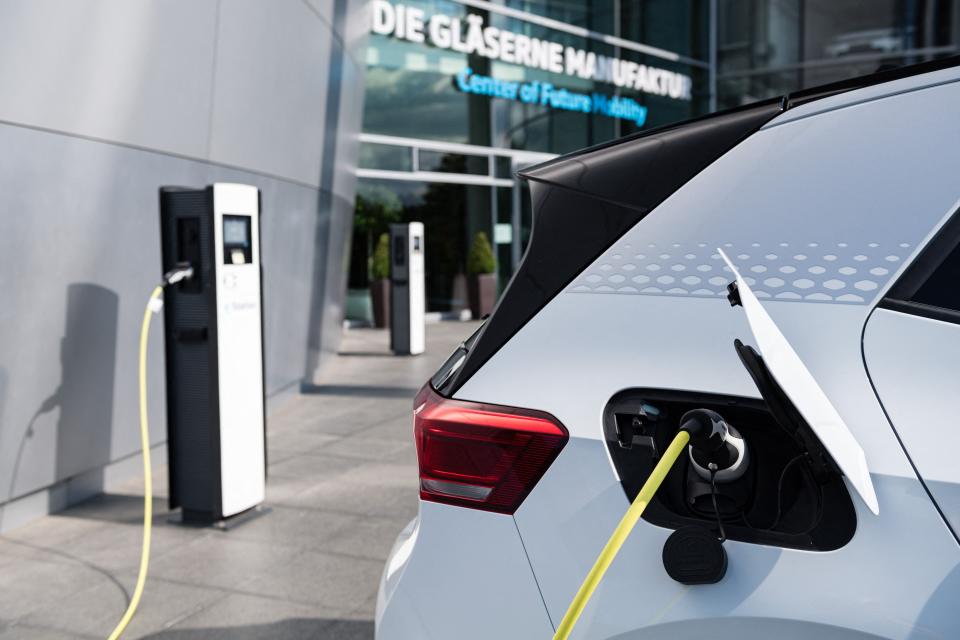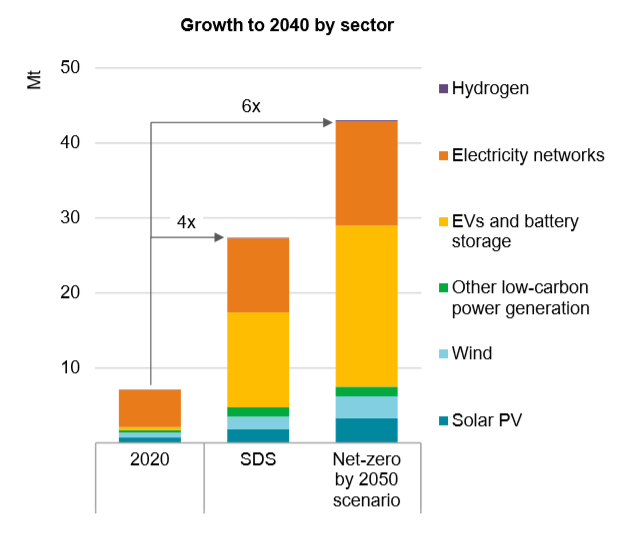Investment in critical minerals used in electric cars and renewables falling ‘well short’ of what is needed, says IEA

Large-scale deployment of low-carbon technologies such as electric cars, wind turbines and solar panels will be key for tackling the climate crisis
(AFP via Getty Images)Investment in critical minerals needed to accelerate the roll out of electric cars and renewables on a global scale is currently falling “well short” of what is required, according to a new report.
Large-scale deployment of low-carbon technologies such as electric cars, wind turbines and solar panels will be key for tackling the climate crisis, experts say.
But the production of these technologies typically rely on a small number of critical minerals, including copper, lithium, nickel, cobalt and rare-earth elements.
A new analysis by the International Energy Agency finds that reaching net-zero emissions globally by 2050 will require a six-fold increase in the use of these critical minerals within the next 20 years.
In the foreword of the report, IEA chief Dr Fatih Birol said that current “supply and investment plans for many critical minerals fall well short of what is needed to support an accelerated deployment of solar panels, wind turbines and electric vehicles”.
“The data shows a looming mismatch between the world’s strengthened climate ambitions and the availability of critical minerals that are essential to realising those ambitions,” he added.
“Left unaddressed, these potential vulnerabilities could make global progress towards a clean energy future slower and more costly – and therefore hamper international efforts to tackle climate change.”
The IEA’s special report on critical minerals is the “most comprehensive” analysis yet of how the world’s use of key metals could change as it transitions away from fossil fuels.
It notes that low-carbon technologies typically require more critical minerals than their fossil fuel counterparts.
For example, a typical electric car requires six times the amount of critical minerals as a petrol car, the report says. One major reason for this is that many electric cars rely on rechargeable batteries made with lithium – a soft and lightweight metal.
In addition, a typical onshore wind turbine requires nine times more mineral resources than a similar-sized gas plant, according to the report. One reason for this is that some wind turbines are reliant on large magnets made from rare-earth elements.
The report also notes that, since 2010, the average amount of minerals needed for a new unit of power generation capacity has increased by 50 per cent – largely as a result of soaring renewable energy use.
Using modelling, the authors project that critical minerals use will need to increase by four times in the next 20 years if the world is to meet the goals of the Paris Agreement, the historic climate deal made five years ago.
In addition, if the world is to reach net zero emissions by 2050, critical mineral use will need to increase six-fold in the next 20 years.

The chief driver of this surge in demand is likely to be electric cars, according to the report. The chart above shows the expected growth in critical minerals use as a result of electric cars and other low-carbon technologies by 2040 under a scenario where the Paris goals are met (labelled “SDS”) and a scenario where the world reaches net zero emissions by 2050.
The report says that companies and governments must act now to ensure that the growing demand for critical minerals is met “sustainably and responsibly”.
The findings should not, however, deter policymakers from pursuing low-carbon technologies, Tim Gould, head of division for the IEA’s World Energy Outlook, told The Independent.
“The starting point for this report is a series of necessary actions that need to take place in order to avoid very severe impacts from climate change,” he said.
“The environmental benefits of deploying wind and solar and moving to electric vehicles are clear.
“There’s certainly scope for producers of these minerals to reduce their environmental footprint and we’re encouraging for those minerals to be produced as responsibly as possible, but even if you take an expansive view of what the emissions associated with those mineral supply chains are, you’ll still come out with a clear climate case for EVs [and other low-carbon technologies].”
Read More
Rare owl species last seen in 1892 photographed for first time
Health service staff to help make NHS net zero carbon pledge a reality

 Yahoo Sports
Yahoo Sports 